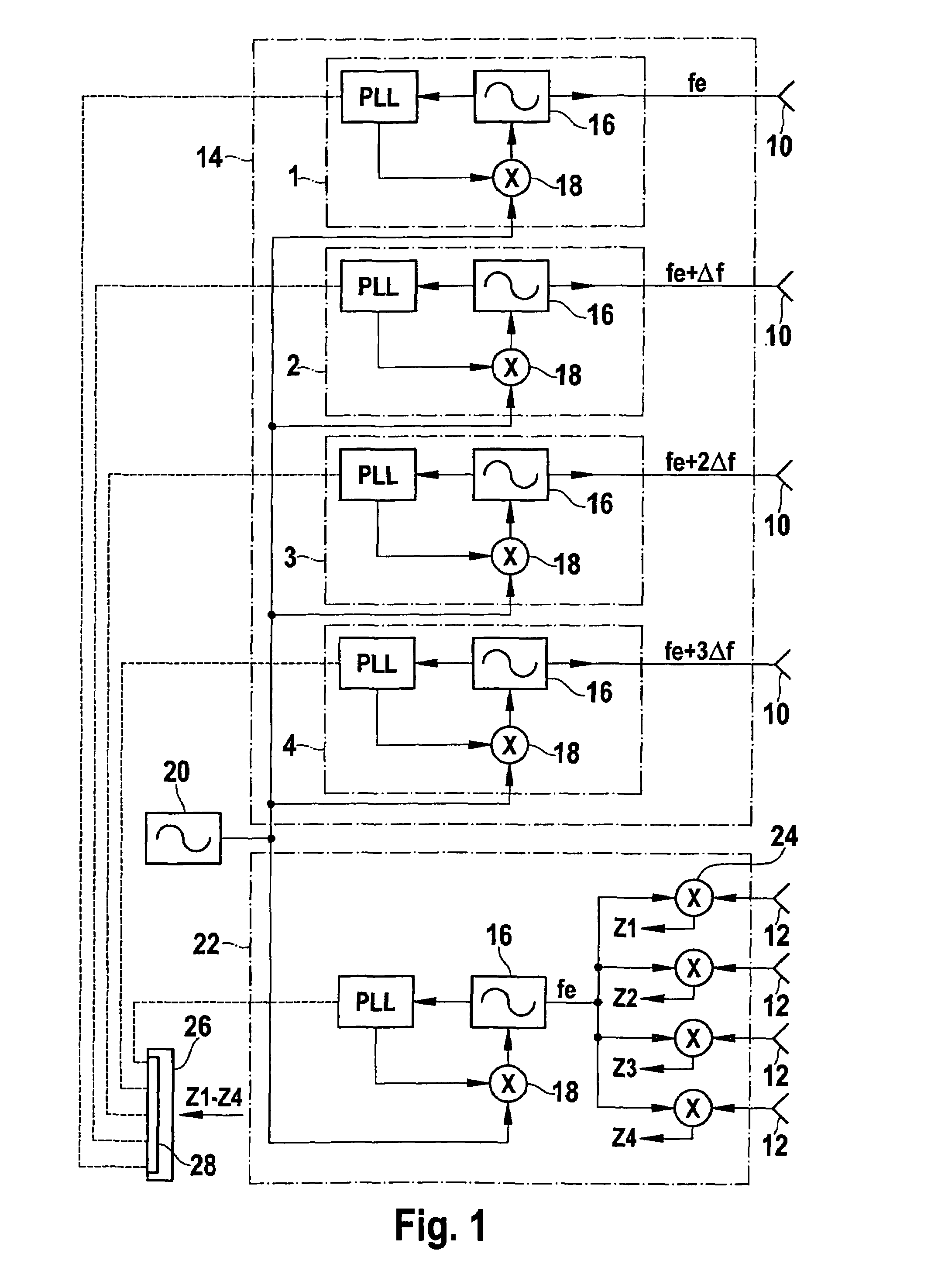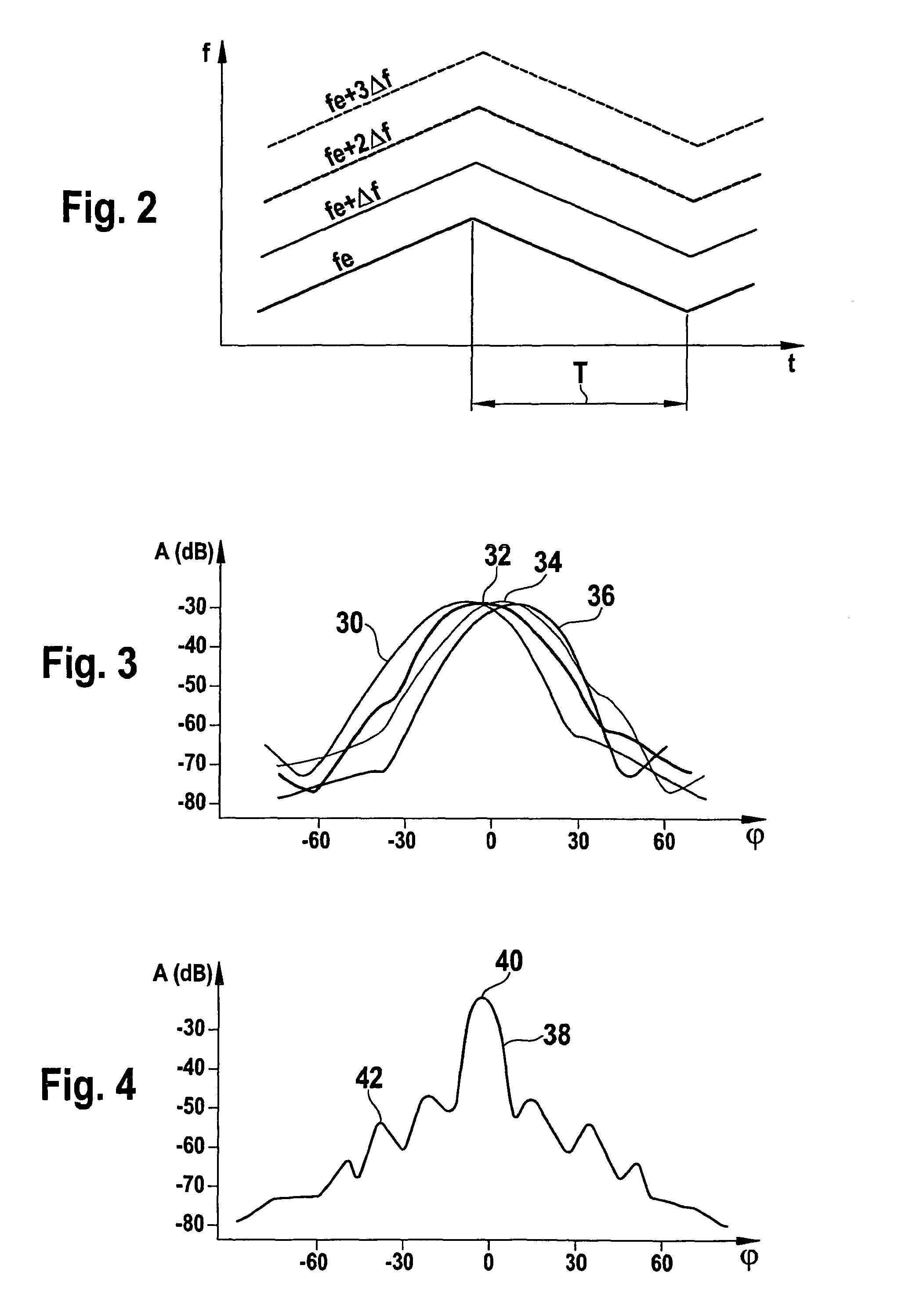FMCW radar sensor
a radar sensor and sensor technology, applied in the field of fmcw radar sensors, can solve the problems of affecting the angular resolution capacity of the known radar sensor, the inability of the radar sensor to resolve the different azimuth angles of the two objects, and the inability to separate the spectrum in the spectrum, so as to improve the angular resolution capacity and minimize the phase jitter of the oscillator
- Summary
- Abstract
- Description
- Claims
- Application Information
AI Technical Summary
Benefits of technology
Problems solved by technology
Method used
Image
Examples
Embodiment Construction
[0035]The FMCW radar sensor shown in FIG. 1 has four antenna elements 10 for transmitting the radar signals and four separate antenna elements 12 for receiving the signal reflected at the objects.
[0036]A supply circuit 14 is subdivided into four channels 1, 2, 3, 4, which are each assigned to one of antenna elements 10. Each channel includes a local oscillator 16 (VCO; voltage controlled oscillator) and a phase-coupling loop PLL (phase locked loop) for the phase regulation and phase stabilization of oscillator 16 via a mixer 18.
[0037]Mixers 18 of all four channels 1, 2, 3 and 4 receive a reference signal from a common reference oscillator 20, for instance, a DRO (dielectric resonance oscillator), which is distinguished by a very low phase jitter. The frequency of oscillators 16 is of the order of magnitude of 76 GHz, for example, while the frequency of reference oscillator 20 amounts to about a quarter of this. An intermediate frequency signal is supplied to each of mixers 18 by the...
PUM
 Login to View More
Login to View More Abstract
Description
Claims
Application Information
 Login to View More
Login to View More - R&D
- Intellectual Property
- Life Sciences
- Materials
- Tech Scout
- Unparalleled Data Quality
- Higher Quality Content
- 60% Fewer Hallucinations
Browse by: Latest US Patents, China's latest patents, Technical Efficacy Thesaurus, Application Domain, Technology Topic, Popular Technical Reports.
© 2025 PatSnap. All rights reserved.Legal|Privacy policy|Modern Slavery Act Transparency Statement|Sitemap|About US| Contact US: help@patsnap.com



